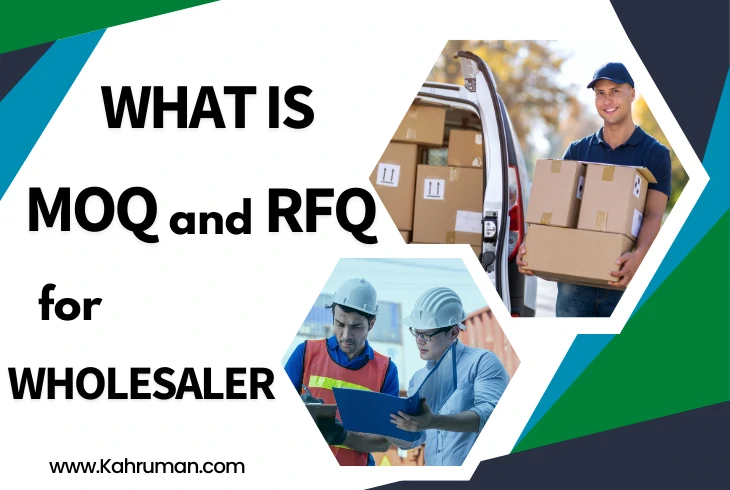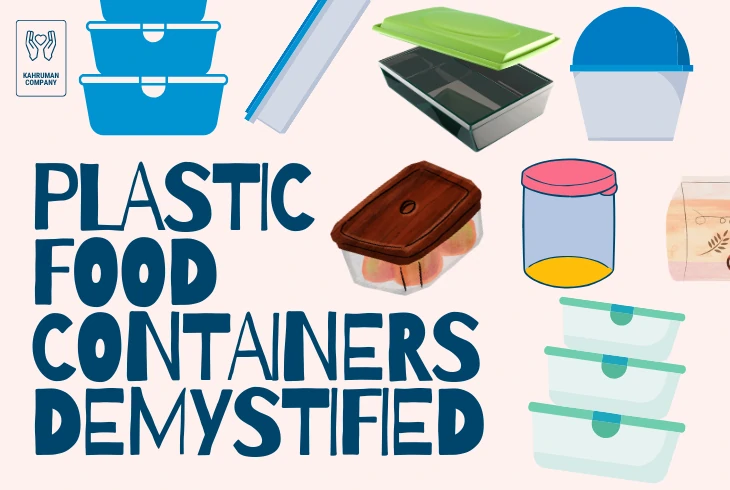What is returnable transport packaging (RTP)?
Returnable Transport Packaging is a type of packaging designed to be used multiple times in a supply chain. It is made of durable materials, such as plastic, metal, boxes or wood, and is exactly designed to be reused, often for years. Returnable transport packaging can include containers, pallets, crates, and other packaging types exactly designed for reuse. Using returnable transport packaging can reduce waste, lower transportation costs, and improve supply chain efficiency by eliminating the need for constant replacement of packaging materials. Many industries have adopted RTP to reduce their real impact and improve their bottom line.
Retaurnable transport packaging Market Poised for Steady Growth Through 2026
A report published in February 2021 said: "The global returnable transport packaging market will grow moderately between 2021 and 2026 due to various reasons, such as the need for sustainable packaging, pollution concerns, and higher transportation costs."
The returnable transport packaging market was worth USD 2.2 billion in 2020 and is expected to grow to USD 2.9 billion by 2025, with a CAGR of 5.5% during the forecast period. The growth is mainly driven by the automotive and manufacturing industries' increasing demand for RTP.
What are the best examples of returnable transport packaging?
Plastic containers (RPCs)
One of the best examples of competitive returnable packaging is reusable plastic containers (RPCs) used in the food industry. These containers are made of durable plastic and can be used repeatedly, often for hundreds of trips, before being recycled. They are commonly used to transport and store fresh produce, such as fruits and vegetables, and have been shown to reduce product damage and waste and decrease shipment costs.
Once emptied, the RPCs are cleaned and returned to the supplier for reuse, rather than disposed of like traditional single-use packaging. This reduces the amount of waste the food industry generates and helps create a more sustainable supply chain.
Pallets
Another example of returnable transport packaging is pallets made of durable materials, such as plastic or metal. These pallets are designed to be used multiple times and withstand repeated use's wear and tear. Pallets are commonly used to transport goods from one location to another and can be returned to the original supplier or sent to another for reuse. By using returnable pallets, companies can reduce their overall packaging costs, decrease waste, and improve their supply chain efficiency.
Is returnable packaging in inventory?
Yes, returnable packaging is considered inventory. Returnable packaging is an essential part of a company's supply chain and is tracked as inventory. Like any other type of inventory, returnable packaging is accounted for and managed to ensure that it is available when needed and not lost or damaged.
Many companies have implemented inventory management systems clearly for their returnable packaging to help them keep track of their inventory levels, reduce losses, and improve supply chain efficiency. By treating returnable packaging as inventory, companies can ensure they use their packaging resources efficiently and effectively.
Which industries most commonly use reusable packaging?
Many industries are adopting reusable packaging as a sustainable alternative to single-use packaging. Here are some of the most common industries that use reusable packaging:
Food and Beverage Industry:
The food and beverage industry has been one of the earliest adopters of reusable packaging. Reusable containers, such as glass jars, plastic containers, and metal tins, are widely used to package food and beverages.
Retail Industry:
Retailers are increasingly using reusable bags and containers to package and transport products. Reusable shopping bags, tote bags, and mesh bags are popular alternatives to plastic bags.
Shipping and Logistics Industry:
Shipping and logistics companies are adopting reusable packaging to reduce waste and save costs. Reusable shipping containers, pallets, and crates are widely used to transport goods.
Healthcare Industry:
The healthcare industry is adopting reusable packaging for medical supplies and equipment: reusable containers and sterilization trays transport and store medical devices and instruments.
Beauty and Personal Care Industry:
The beauty and personal care industry is also shifting towards reusable packaging. Refillable and reusable bottles, jars, and tubes are increasingly popular for shampoo, conditioner, and lotion products.
Any industry that packages and transports products can benefit from reusable packaging.
How do you display returnable transport packaging stock?
When displaying returnable transport packaging (RTP) stock, it's essential to ensure that it is easily accessible and visible to those who need it. The following are some tips for displaying RTP stock:
Choose a designated area: Choose an area in your warehouse or facility where RTP stock can be stored and easily accessed. This area should be large enough to hold your stock and should be clearly marked as the returnable transport packaging storage area.
Use pallet racks: Pallet racks are a great way to store returnable transport packaging stock, as they are designed to hold heavy loads and can be easily accessed using forklifts or pallet jacks.
Label clearly: Use clear and visible labeling to help identify the returnable transport packaging stock. This can include labeling the shelves, pallet racks, or single containers with the type of RTP, the quantity, and any other relevant information.
Organize by type: organize RTP stock by types, such as plastic totes, metal crates, or wooden pallets. This will help keep your returnable transport packaging stock organized and make it easier to find the right type of container when needed.
Regularly check stock levels: Regularly check the stock levels of your RTP to ensure that you have enough on hand for your needs. This will help to avoid any delays in shipping or transport due to a shortage of RTP.
By following these tips, you can ensure that your returnable transport P stock is well organized and easily accessible when you need it.
What is the difference between returnable and non-returnable containers?
Returnable and non-returnable containers are two types of packaging used in various industries to transport and store goods.
Returnable Containers:
Designed for multiple uses: Returnable transport containers are intended to be used many times and are built with durable materials such as metal, plastic, or wood that can withstand multiple trips.
Returned to the sender: After the goods have been delivered, the empty containers are collected and returned to the sender for use, making them more cost-effective and environmentally friendly.
Used in supply chain management: Returnable transport containers are widely used in supply chain management to transport goods from one location to another and are ideal for companies with frequent shipments.
More expensive upfront cost: Returnable containers are more cost-effective in the long run, but they typically have a higher upfront cost than non-returnable containers due to their durable materials and construction.
Non-Returnable Containers:
Designed for single use: Non-returnable containers are intended for one-time use only and are typically made of materials like cardboard, paper, or lightweight plastic, which are not as durable as returnable containers.
Typically discarded: Once the goods have been used or consumed, the non-returnable containers are typically disposed of, making them less environmentally friendly than returnable containers.
Widely used in food and beverage, pharmaceuticals, and consumer goods: Non-returnable containers are commonly used in industries where hygiene and convenience are important factors, such as food and beverage, pharmaceuticals, and consumer goods.
Lower upfront cost: Non-returnable containers are typically less expensive upfront than returnable containers due to their less durable materials and construction.
What are the advantages of using RTP?
Using reusable transport packaging (RTP) over disposable or single-use packaging has several advantages. Here are some of the main benefits:
Cost savings: RTP can help companies save money over time compared to single-use packaging because it can be used repeatedly. While the upfront cost of RTP may be higher, the cost per trip decreases with each use.
Improved continuity: RTP reduces waste by eliminating the need for disposable or single-use packaging, which helps reduce landfill waste and improve continuity. RTP helps to reduce the carbon footprint connected with the production, transport, and disposal of single-use packaging.
Increased efficiency: RTP is designed to be sturdy and durable, which helps to minimize product damage and loss during transport. Using standardized returnable transport packaging can improve the efficiency of supply chain operations by reducing the time and resources required to load and unload trucks.
Better product protection: RTP is designed to protect goods during transport, reducing the risk of damage or spoilage. This is especially important for fragile or perishable goods requiring special handling.
Improved hygiene: RTPs can be designed with easy-to-clean surfaces, making them more hygienic than single-use packaging. This is extremely important in the food and beverage, medicine, and healthcare industries, where hygiene is critical.
What are the risks of using reusable packaging?
While reusable packaging provides many benefits, some risks are associated with its use. Here are some of the potential risks of using reusable packaging:
Increased costs for logistics and management:
RTP requires additional logistics and management processes to collect, sort, inspect, clean, and store the packaging between uses. These processes can be complex and require additional resources, increasing costs for companies.
Cross-contamination and hygiene risks:
Returnable transport packaging can carry contaminants such as bacteria, allergens, or pathogens between uses, especially if it is not cleaned and maintained correctly. This risks product safety and quality and could result in illness or harm for consumers.
Damage or loss:
RTP can be lost, stolen, or damaged during transport or handling, resulting in replacement costs and potential product loss.
Environmental impacts:
While RTP is more sustainable than disposable or single-use packaging, the production and disposal of returnable transport packaging still have an environmental impact. The production of durable materials such as metal or plastic can generate greenhouse gas emissions and use energy and natural resources. The disposal of RTP at the end of its useful life can also have environmental impacts, such as recycling or landfill waste.
Compatibility issues: RTP may only be compatible with some products or packaging systems, limiting its usefulness in some industries or supply chains.
Is returnable packaging right for you?
Whether returnable packaging suits your business depends on several factors, including your industry, supply chain, product characteristics (like size), and sustainability goals. Here are some thoughts that can help you decide if returnable packaging is a good fit for your business:
Industry: Returnable packaging is commonly used in industries such as automotive, producing, and retail, where there is a need for durable and reusable packaging solutions. Returnable packaging may be a good fit for your business if you operate in one of these industries.
Supply chain: If your business involves a complex supply chain with multiple transport and storage stages. Returnable packaging can help you optimize your operations by reducing waste, minimizing costs, and improving efficiency.
Product characteristics: If your products are fragile, perishable, or require specialized handling, returnable packaging can help protect them during transport and storage. Returnable packaging can be customized to meet your specific product needs.
Sustainability goals: If your business is committed to sustainability and reducing waste, returnable packaging can effectively achieve these goals. Returnable transport packaging can reduce the amount of packaging waste generated by your business, improving your environmental performance and reducing your carbon footprint.
Cost considerations: While returnable packaging can be cost-effective in the long run, upfront costs may be associated with acquiring and managing the packaging. It would help to consider these costs about the potential benefits of returnable packaging for your business.
Overall, if your business operates in an industry where returnable packaging is commonly used, and if you have a complex supply chain, products that require specialized handling, and sustainability goals, returnable packaging may be a good fit for your business. You must evaluate the potential benefits and costs of returnable packaging and assess whether it aligns with your business objectives and sustainability goals.
Case Study on Successful Implementation of Returnable Transport Packaging
One successful case study of implementing returnable transport packaging (RTP) is that of Toyota Material Handling Europe (TMHE), a leading provider of forklift trucks and warehouse equipment in Europe. TMHE began implementing returnable transport packaging in 2009 to reduce waste, decrease costs, and improve the sustainability of the supply chain.
The company worked closely with its suppliers to introduce reusable packaging, such as containers and pallets, into its supply chain. TMHE provided its suppliers with training on the proper use and handling of RTP and supported them in implementing the packaging
The result of the returnable transport packaging implementation:
TMHE reduced its waste by 74%.
Its carbon footprint decreased by 33% from 2009 to 2017.
The company experienced a cost savings of €4.5 million in shipment and packaging costs.
The returnable transport packaging system improved supply chain efficiency by reducing time in transit, as reusable containers could be stacked and transported more efficiently than single-use packaging. In addition, the returnable transport packaging system improved product protection, as the containers and pallets provided better cushioning and protection during transport.
TMHE's success in implementing RTP was due to its commitment to continuity and its collaboration with its suppliers. The company's willingness to invest in the necessary training and support for its suppliers and its emphasis on continuous improvement and innovation were critical factors in the success of the returnable transport packaging implementation.
Overall, the usage of RTP by TMHE demonstrates the benefits of adopting sustainable practices in the supply chain, including cost savings, improved efficiency, and reduced environmental impact.
The Best Practices for Optimizing Returnable Transport Packaging
As we said, Returnable Transport Packaging (RTP) is an essential aspect of supply chain management that involves using reusable containers or packaging to transport products between manufacturers, suppliers, and customers. Optimizing RTP can help businesses reduce costs, improve efficiency, and reduce waste. The following are some best practices for optimizing RTP:
Choose the correct type of packaging:
The proper packaging will depend on the type of product being transported and the specific requirements of the supply chain. For example, if you are transporting fragile items, you may need packaging that provides extra protection, such as foam or padded containers.
Standardize your packaging:
Standardizing your packaging can help you reduce costs and improve efficiency by making it easier to manage your inventory and transport items. Standardization can make tracking your returnable transport packaging easier and ensure it is used effectively.
Implement a tracking system:
A tracking system can help you keep track of your returnable transport packaging and ensure that it is used effectively. This can include using RFID tags, barcodes, or other technologies to track the movement of your RTP throughout the supply chain.
Maintain your returnable transport packaging:
Regular maintenance of your returnable transport packaging can help you extend its lifespan and reduce the need for frequent replacements.
Returnable transport packaging (RTP) has gained significant attention in recent years as a sustainable solution for businesses that transport goods. Drivers cited for this trend include the rising costs of packaging materials, increased environmental awareness, and the need to streamline logistics operations. The reverse logistics of RTP allows for multi-use, providing a more sustainable medium for transport.
Additionally, RTP offers barriers to prevent damage during transport and reduces the risk of product loss. An analysis of the benefits of returnable transport packaging shows that it is a valued solution that can reach far beyond the customer. Witnesses to the positive impact of RTP include companies that have successfully implemented it in their supply chain, leading to cost savings and improved sustainability metrics. Overall, rtp is a forward-thinking solution that offers significant advantages to businesses seeking to improve their environmental footprint and streamline logistics operations.











